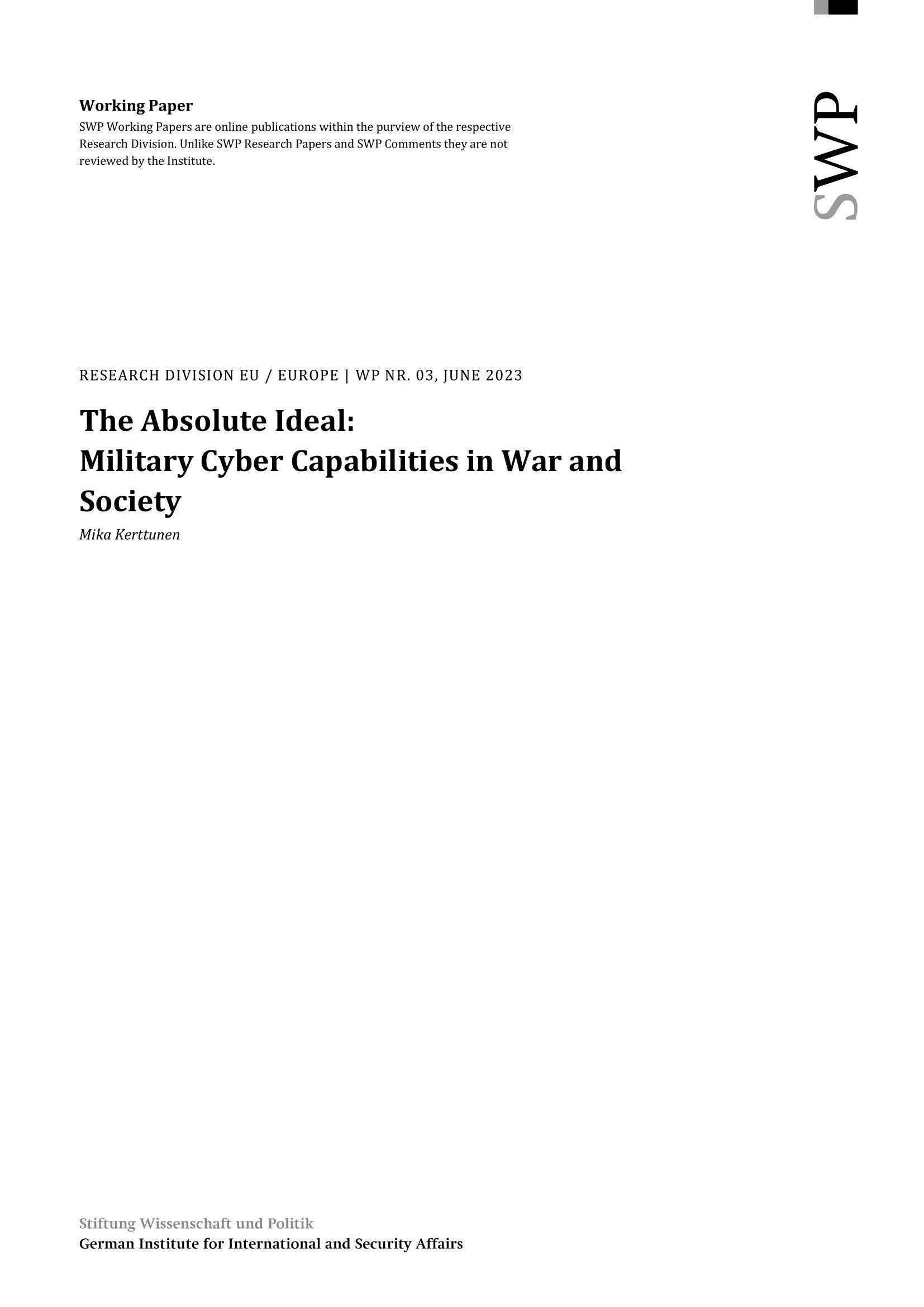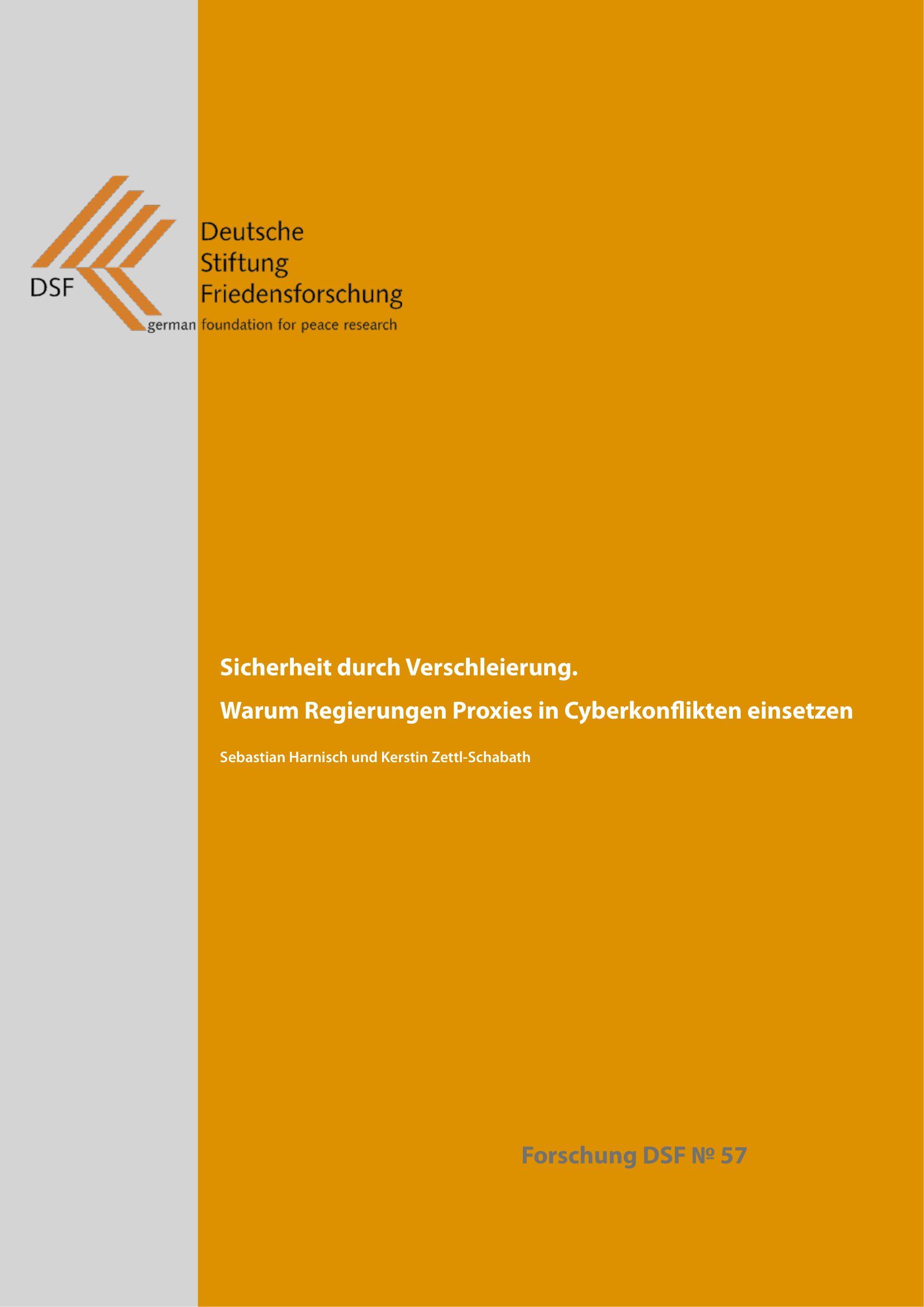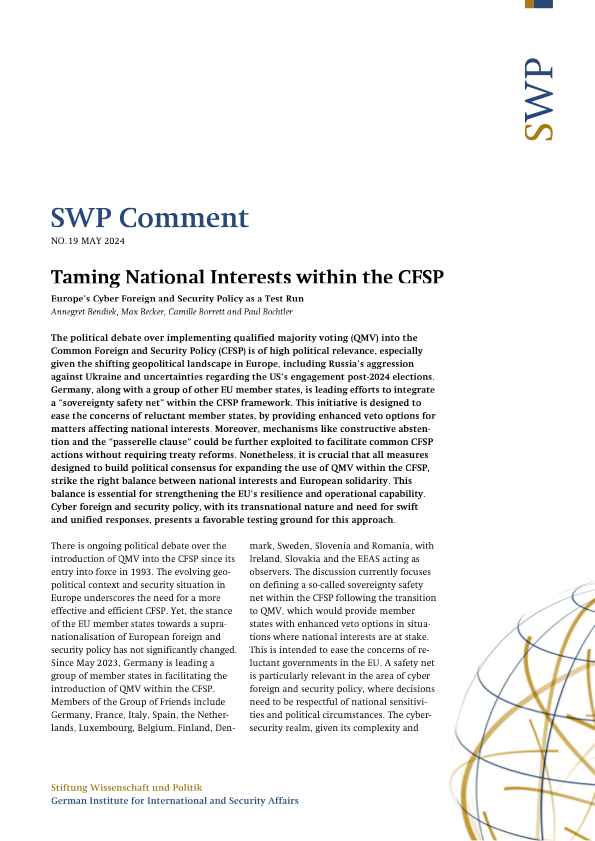Security through Obfuscation: Why Governments Use Proxies in Cyber Conflicts
- 31 May 2023
- Harnisch, Sebastian; Zettl-Schabath, Kerstin
- DE
In this report, Sebastian Harnisch and Kerstin Zettl-Schabath present the HD-CY.CON cyberconflict dataset and shed light on autocratic and democratic use of proxies in cyberspace.
The dataset HD.CY-CON covers malicious cyber operations, which came to be known, between 2000 and 2019 by state and non-state actors. It specifically documents initiating and receiving actors of cyber-crime, cyber espionage and cyber sabotage operations, the respective modus operandi, an intensity score as well as a detailed categorization of the technical and political attribution process. Overall, it consists of 1.265 incident descriptions, using 43 different categories to highlight the prominent role of different types of cyber proxies in obfuscating or concealing the attribution of cyber operations. HD.CY-CON supplements existing datasets on cyber conflict behavior in four areas: measuring cyber conflict intensity, the interaction between On- und Offline conflict dynamics as well as cyber proxy behavior and detailing attribution processes. In this pilot study, we use a liberal explanatory model to examine the use of cyber-proxies by democratic and autocratic regime types. Whereas autocratic regimes use cyber proxies to obfuscate offensive operations vis-à-vis democratic regimes, the latter utilize the advantage of IT-security providers to technically attribute operations that do not create political pressure for an escalatory response.
The dataset HD.CY-CON covers malicious cyber
operations, which came to be known, between
2000 and 2019 by state and non-state actors. It
specifically documents initiating and receiving
actors of cyber-crime, cyber espionage and cy
–
ber sabotage operations, the respective modus
operandi, an intensity score as well as a detailed
categorization of the technical and political at
–
tribution process. Overall, it consists of 1.265 in
–
cident descriptions, using 43 different catego
–
ries to highlight the prominent role of different
types of cyber proxies in obfuscating or concea
–
ling the attribution of cyber operations.
HD.CY-CON supplements existing datasets on
cyber conflict behavior in four areas: measuring
cyber conflict intensity, the interaction between
On- und Offline conflict dynamics as well as cy
–
ber proxy behavior and detailing attribution
processes. In this pilot study, we use a liberal ex
–
planatory model to examine the use of cyber
proxies by democratic and autocratic regime ty
–
pes. Whereas autocratic regimes use cyber pro
–
xies to obfuscate offensive operations vis-à-vis
democratic regimes, the latter utilize the advan
–
tage of IT-security providers to technically attri
–
bute operations that do not create political
pressure for an escalatory response.
The dataset HD.CY-CON covers malicious cyber
operations, which came to be known, between
2000 and 2019 by state and non-state actors. It
specifically documents initiating and receiving
actors of cyber-crime, cyber espionage and cy
–
ber sabotage operations, the respective modus
operandi, an intensity score as well as a detailed
categorization of the technical and political at
–
tribution process. Overall, it consists of 1.265 in
–
cident descriptions, using 43 different catego
–
ries to highlight the prominent role of different
types of cyber proxies in obfuscating or concea
–
ling the attribution of cyber operations.
HD.CY-CON supplements existing datasets on
cyber conflict behavior in four areas: measuring
cyber conflict intensity, the interaction between
On- und Offline conflict dynamics as well as cy
–
ber proxy behavior and detailing attribution
processes. In this pilot study, we use a liberal ex
–
planatory model to examine the use of cyber
proxies by democratic and autocratic regime ty
–
pes. Whereas autocratic regimes use cyber pro
–
xies to obfuscate offensive operations vis-à-vis
democratic regimes, the latter utilize the advan
–
tage of IT-security providers to technically attri
–
bute operations that do not create political
pressure for an escalatory response.
More external publications
- Research and Analysis

21 July 2023
In this article, Annegret Bendiek and Jakob Bund discuss European cyber defense and the necessity of clearly communicated normative principles in order to move from a reactive to an active approach.

3 June 2023
In this research paper, Mika Kerttunen argues that while cyber operations may be relatively ineffective for conducting war, their peacetime employment can contribute to the outbreak of conflict due to their violent nature.

